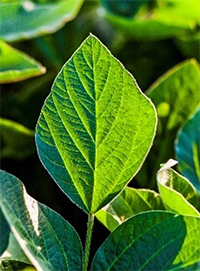 When spring comes, weeds begin their annual job of working to mess up everything from planting through to harvest. While you likely know which weeds will potentially give your customers fits, now’s a good time for a refresher course in how best to control them.
When spring comes, weeds begin their annual job of working to mess up everything from planting through to harvest. While you likely know which weeds will potentially give your customers fits, now’s a good time for a refresher course in how best to control them.
Get the upper hand on these three weeds
Finding a solution starts with understanding the problem. Here are some key characteristics of three of today’s herbicide-resistant driver weeds that will almost certainly cause trouble in Midwestern soybean fields this spring:
- Waterhemp is a summer annual broadleaf weed. It’s able to produce more than 1 million seeds per plant and can grow by about 1 inch per day during the growing season. Waterhemp looks similar to other pigweeds but has leaves that are generally longer and more lance-shaped. In the past 25 years, waterhemp has grown resistant to six classes of herbicides and threatens to resist various modes of action.
- Marestail is a winter and summer annual broadleaf weed. It can germinate in the fall, survive over winter and continue growing in spring. Marestail will grow on straight, upright stalks that can reach up to 6 feet high. Many states in the Midwest are fighting the ever-growing population of marestail resistant to glyphosate and ALS-inhibiting herbicides.
- Lambsquarters is a cool-season, annual broadleaf weed that tends to germinate early in the spring. You can identify lambsquarters by looking for a white, “frosted” appearance on the upper leaves. Common lambsquarters emerges early in the growing season, so it is key to control this weed with a postemergence herbicide prior to reaching maximum control heights.
Managing weed control in soybeans
It is best to battle these weeds using herbicides with unique modes of action, flexible application timing and lasting residual control. One herbicide that meets these criteria for success is Trivence® herbicide from Corteva Agriscience.
Trivence offers three unique modes of action to: stunt seedling growth; bind to weed proteins to stop energy production in the plant; and contact control by burning plant tissues. It adds up to residual control that lasts up to six weeks after application.
When bad weather causes setbacks, Trivence provides a flexible application window — from preplant up to three days after planting — giving applicators more opportunities to spray. It can even be used as a burndown herbicide to wipe out marestail plants that survived the winter. Talk to your customers about Trivence this spring.
Trivence® is not registered for sale or use in all states. Contact your state pesticide regulatory agency to determine if a product is registered for sale or use in your state. Always read and follow label directions.